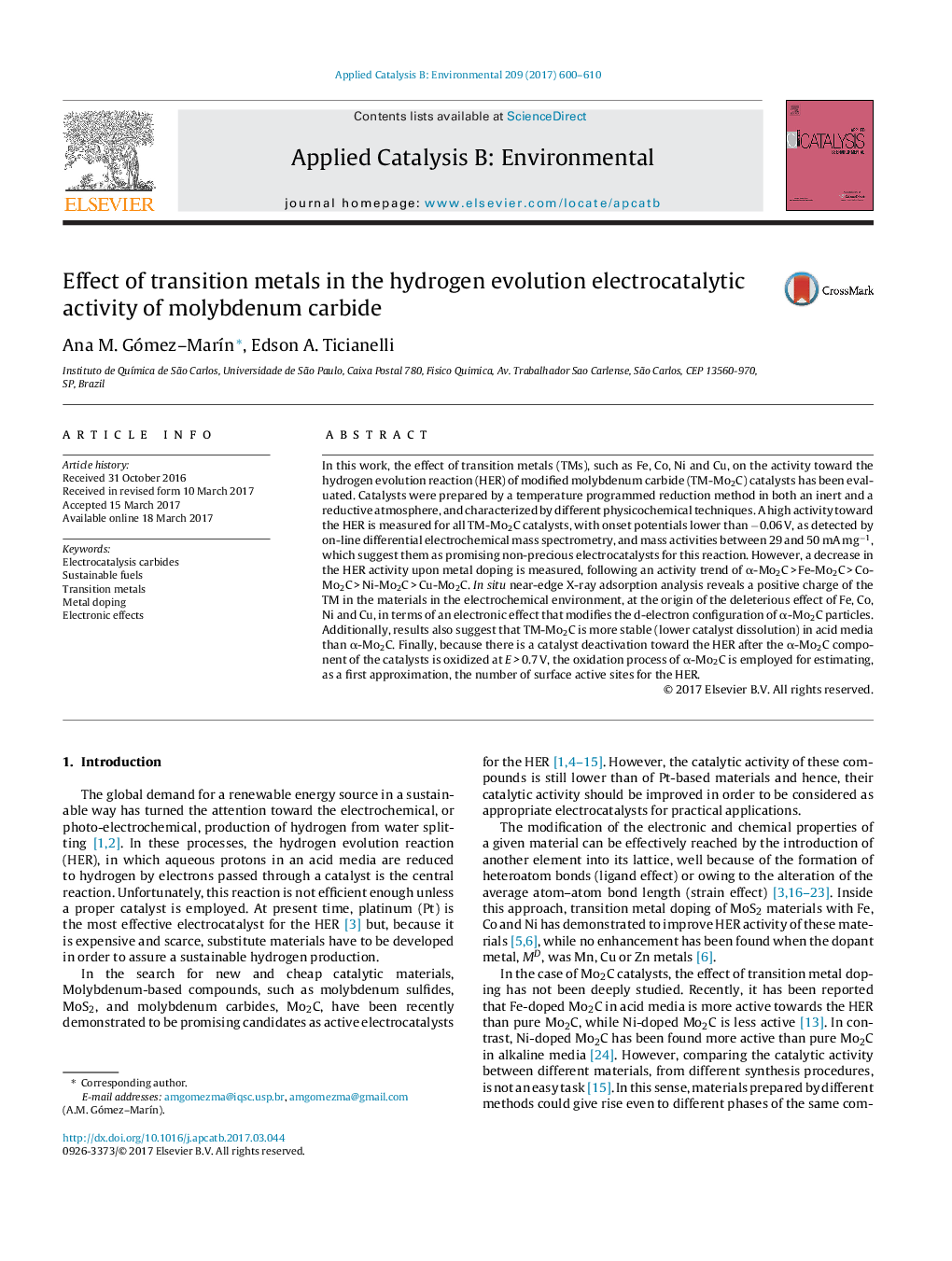| کد مقاله | کد نشریه | سال انتشار | مقاله انگلیسی | نسخه تمام متن |
|---|---|---|---|---|
| 6454241 | 1418811 | 2017 | 11 صفحه PDF | دانلود رایگان |
- Mo2C based materials are promising non-precious catalysts for hydrogen production.
- Transition metal doping of Mo2C increases its electrochemical stability.
- Transition metal doping of Mo2C increases its stability in acid media.
- Mo2C oxidation sheds light about the number of surface active sites for the HER.
In this work, the effect of transition metals (TMs), such as Fe, Co, Ni and Cu, on the activity toward the hydrogen evolution reaction (HER) of modified molybdenum carbide (TM-Mo2C) catalysts has been evaluated. Catalysts were prepared by a temperature programmed reduction method in both an inert and a reductive atmosphere, and characterized by different physicochemical techniques. A high activity toward the HER is measured for all TM-Mo2C catalysts, with onset potentials lower than â0.06 V, as detected by on-line differential electrochemical mass spectrometry, and mass activities between 29 and 50 mA mgâ1, which suggest them as promising non-precious electrocatalysts for this reaction. However, a decrease in the HER activity upon metal doping is measured, following an activity trend of α-Mo2C > Fe-Mo2C > Co-Mo2C > Ni-Mo2C > Cu-Mo2C. In situ near-edge X-ray adsorption analysis reveals a positive charge of the TM in the materials in the electrochemical environment, at the origin of the deleterious effect of Fe, Co, Ni and Cu, in terms of an electronic effect that modifies the d-electron configuration of α-Mo2C particles. Additionally, results also suggest that TM-Mo2C is more stable (lower catalyst dissolution) in acid media than α-Mo2C. Finally, because there is a catalyst deactivation toward the HER after the α-Mo2C component of the catalysts is oxidized at E > 0.7 V, the oxidation process of α-Mo2C is employed for estimating, as a first approximation, the number of surface active sites for the HER.
145
Journal: Applied Catalysis B: Environmental - Volume 209, 15 July 2017, Pages 600-610
